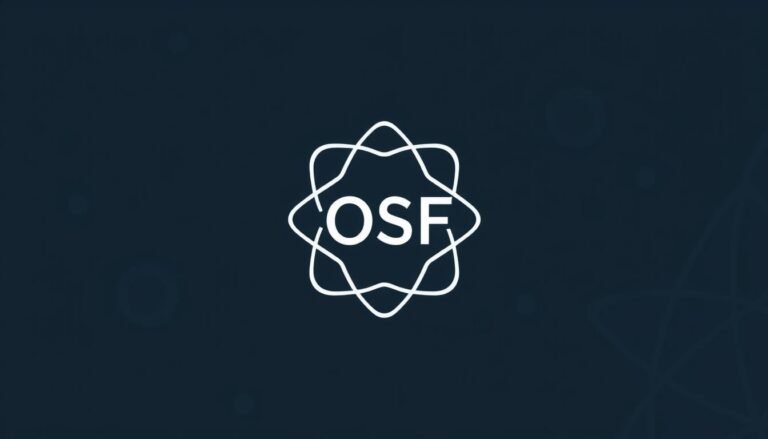
From Awareness to Action: How to Cultivate Emotional Intelligence in Daily Life
Introduction
In a world where interpersonal skills can make or break success—whether in the workplace, at home, or in social settings—emotional intelligence (EI) is not just a buzzword; it’s a necessity. Have you ever noticed how some people seem naturally adept at navigating their emotions and the feelings of others? They can read the room, respond empathetically, and resolve conflicts with ease. This isn’t merely luck; it’s a product of cultivated emotional intelligence.
This article, "From Awareness to Action: How to Cultivate Emotional Intelligence in Daily Life," will explore how you can harness the power of emotional intelligence to enhance your relationships and improve your overall well-being. We will provide practical strategies, engaging case studies, and create a clear pathway that takes you from mere awareness of your emotions to actionable steps that will integrate emotional intelligence into your daily routine.
Understanding Emotional Intelligence
What is Emotional Intelligence?
Before delving into practical applications, it’s crucial to understand what emotional intelligence encompasses. Emotional intelligence refers to the ability to recognize, understand, and manage our own emotions while also being aware of and able to influence the emotions of others. Daniel Goleman, a key figure in the study of EI, outlines five essential components:
- Self-awareness: Recognizing your own emotions and their impact.
- Self-regulation: Managing your emotions to respond appropriately.
- Motivation: Harnessing emotions to pursue goals.
- Empathy: Understanding the emotions of others.
- Social skills: Navigating social complexities with ease.
The Importance of EI in Daily Life
Emotional intelligence plays a vital role in many aspects of life, influencing everything from job performance and leadership to personal relationships and mental health. People with high EI can communicate effectively, handle stress, and adapt to change seamlessly. In the workplace, studies have shown that employees with higher emotional intelligence tend to have better job performance and are often perceived as more competent leaders.
From Awareness to Action: The Journey Begins
Step 1: Cultivating Self-Awareness
Understanding Your Emotions
The first step in the journey from awareness to action is cultivating self-awareness. Take time each day to reflect on your emotions. Ask yourself questions like:
- What emotions am I feeling right now?
- What triggered these feelings?
- How are my emotions affecting my behavior?
Keep a journal to track your feelings and their triggers over time. This can help you identify patterns in your emotional responses.
Case Study: Mindful Reflection at Work
Consider the case of Sarah, a project manager in a tech company. Juggling tight deadlines and team expectations often left her feeling stressed. Realizing the toll this took on her team, she decided to incorporate daily reflections into her routine. Each evening, Sarah would jot down her feelings, the day’s challenges, and how she responded to them. Over time, she noticed she was more aware of when stress brewed—allowing her to recognize opportunities for proactive communication.
Self-Awareness Exercise
Try this simple exercise: Each evening, spend ten minutes journaling about your emotions throughout the day. Focus on identifying specific triggers and your reactions. Over time, you’ll begin to see patterns that can inform your approach.
Step 2: Practicing Self-Regulation
Managing Impulses
Once you’ve cultivated self-awareness, the next step is to learn self-regulation. This involves pausing before you react and considering the most constructive way to respond. Techniques like deep breathing, counting to ten, or taking a walk can help manage impulsive reactions in emotionally charged situations.
Case Study: The Tempestuous Supervisor
John was a supervisor known for his fiery temperament. During one team meeting, he reacted explosively to a suggestion that conflicted with his plans. After realizing his emotional outbursts affected his team’s morale, John employed self-regulation techniques. He began taking deep breaths before responding and practiced pausing for a moment to reflect on the best response. His improved demeanor helped foster a more positive team environment.
Self-Regulation Exercise
When faced with a challenging interaction, take a moment to breathe deeply—count to five during the inhale and five during the exhale. This simple practice can create space between your emotions and your reactions.
Step 3: Igniting Motivation
Using Emotions to Drive Goals
High emotional intelligence also involves tapping into your emotional energy to motivate yourself and others. Identify what drives you. Are you motivated by personal success, recognition, or a desire to contribute positively to your community?
Case Study: The Charismatic Leader
Consider Aisha, a team leader at a nonprofit. She recognized that her passion for helping underserved communities motivated her. She began sharing her motivations with her team, creating a shared vision that inspired collective action. The result? Her team became more engaged and committed to their projects, leading to significant accomplishments.
Motivation Exercise
Identify your core values and how they align with your life goals. Write down your motivations and consider how you can articulate these to inspire others.
Step 4: Enhancing Empathy
Building Connections
Empathy is the backbone of emotionally intelligent interactions. To cultivate empathy, actively listen to others and strive to understand their feelings. Put yourself in their shoes, and reflect on their experiences.
Case Study: The Empathetic Teacher
Ms. Parker, a high school teacher, noticed some students struggled with their emotional well-being, impacting their academic performance. She began to check in with her students regularly, using active listening techniques. By validating their feelings and offering support, she created a safe environment fostering trust and connection. Her empathy transformed the classroom dynamic.
Empathy Exercise
Try practicing active listening by focusing entirely on the speaker, reflecting their feelings back to them, and asking follow-up questions to deepen your understanding.
Step 5: Strengthening Social Skills
Effective Communication
Your ability to navigate social complexities hinges on strong social skills. This includes the ability to communicate effectively, manage conflict gracefully, and foster relatability with others.
Case Study: The Negotiator
Mark worked as a negotiator for a large corporate firm. Initially, he struggled during negotiations, often coming off as confrontational. After attending an EI workshop, he learned the importance of social skills and how to read cues from others. With newfound tactics, Mark approached negotiations collaboratively, resulting in more favorable outcomes for his clients and himself.
Social Skills Exercise
Evaluate your communication style. Are you assertive, passive, or aggressive? Aim to adopt an assertive style. It’s important to respect your feelings and the feelings of others.
Tables and Charts: Key EI Components
Below is a table summarizing the key components of emotional intelligence:
| Component | Description | Practical Applications |
|---|---|---|
| Self-Awareness | Recognizing one’s own emotions | Daily journaling |
| Self-Regulation | Managing one’s emotional responses | Breathing techniques |
| Motivation | Harnessing emotions to achieve goals | Aligning personal values |
| Empathy | Understanding and sharing the feelings of others | Active listening practices |
| Social Skills | Navigating social situations effectively | Assertive communication |
Conclusion
From awareness to action: how to cultivate emotional intelligence in daily life is a journey of self-discovery and growth. By focusing on awareness, self-regulation, motivation, empathy, and social skills, you are setting yourself up for success in both personal and professional domains. The rewards of this investment are immense; you’ll be fostering deeper relationships, improving your mental health, and paving the way for greater success.
As you move forward, remember that cultivating emotional intelligence is not a one-time effort, but an ongoing process. Start small, be patient with yourself, and take consistent action. Embrace the challenge, and watch as your relationships flourish and your stress diminishes.
FAQs
1. What is the first step to developing emotional intelligence?
The first step is cultivating self-awareness. You need to recognize and understand your own emotions to begin managing them effectively.
2. How can I practice self-regulation in daily life?
You can practice self-regulation by employing techniques such as deep breathing, pausing before reacting, and reflecting on the situation before responding.
3. Why is empathy important in emotional intelligence?
Empathy allows you to connect with others’ feelings, fostering deeper relationships and enabling better communication, which is vital in both personal and professional contexts.
4. Can emotional intelligence be developed over time?
Yes, emotional intelligence can be developed through consistent practice and awareness. Engaging in reflective exercises and active listening can enhance your EI.
5. How does emotional intelligence impact my career?
High emotional intelligence can lead to better job performance, improved teamwork, and more effective leadership. It helps in navigating workplace dynamics effectively.
By embracing the principles outlined in "From Awareness to Action: How to Cultivate Emotional Intelligence in Daily Life," you will be well on your way to unlocking your emotional potential and enhancing every facet of your life. Take the first step today!

















